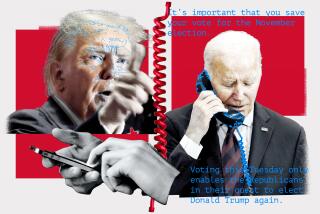April Fool’s Day 2012: Don’t trust the media (seriously)
Today is April Fool’s Day, also known as All Fool’s Day and, unofficially perhaps, Don’t Trust the Media Day.
Yes, yes, that’s every day in some circles. But on April Fool’s Day, the warning has particular resonance. Because year after year, April Fool’s Day proves that some people will believe anything if it’s presented with a straight-enough face.
Take the BBC report on the bumper Swiss spaghetti harvest. The vanquishing of the spaghetti weevil made such a thing possible, the BBC reported in 1957. The video of spaghetti strands being pulled from trees was likely the clincher for many viewers; video must be believed.
Then there were the full-page newspaper ads in 1996 for the newly renamed Taco Liberty Bell; the Guardian’s 1977 special report on the small republic of San Serriffe, consisting of small, semicolon-shaped islands; and, of course, NPR’s 1992 story about Richard Nixon running for president again. Slogan? “I didn’t do anything wrong, and I won’t do it again.”
All of these -- and many more -- make the Museum of Hoaxes’ list of Top 100 April Fool’s Day Hoaxes of All Time, “as judged by notoriety, creativity, and number of people duped.”
Another favorite is the 1998 New Mexicans for Science and Reason newsletter detailing how the Alabama state legislature had voted to change the mathematical value of pi from 3.14 to the more “Biblical value” of 3.0. (Who wouldn’t believe this?) The article was written by a physicist amused, or perhaps very unamused, by state lawmakers’ attempts to avoid teaching evolution.
The BBC makes the list with some regularity (check out the flying penguins photo on No. 12), it apparently having more of a lighter side than some purveyors of news might think.
The history of the day of pranks is a little murky but as the Encyclopedia Brittanica notes, the practice of trying to make a fool of someone (or many someones) goes back centuries -- and it’s observed in countries around the world.
There’s speculation that the observance might have started in France in 1582, when the Gregorian calendar cavalierly changed the first day of the year to Jan. 1, instead of the more customary March 25. The folks who kept celebrating New Year Week come April 1 were called fools, the site says.
The day’s origins have something to do with the spring equinox as well, when sudden weather changes baffle pretty much everyone.
There are other theories, as Infoplease points out, among them one that has Roman emperor Constantine turning over the reins to a jester named Kugel for the day. Of course, that story just goes to prove that sometimes the media have to take a joke as well. The theory was fake, constructed for the AP’s benefit in 1983.
Forbes.com offered an early heads up on this year’s attempts to prank the media -- among them the Kanye West Whodat hoax, which Poynter.org deconstructed to great effect.
And in the spirit of today’s do-it-yourself information platforms, USA Today provided tips on how to tech-prank your friends directly.
All of which goes to show that today, of all days, be wary. Be very wary.
Especially of Google.
RELATED (KIND OF):
Tech firms’ data gathering worries Californians, poll finds
Pi Day: Why we’re transfixed by the delicious mystery of pi April Fools’ Day: Five great Internet hoaxes -- Tacocopter anyone?
More to Read
Sign up for Essential California
The most important California stories and recommendations in your inbox every morning.
You may occasionally receive promotional content from the Los Angeles Times.










